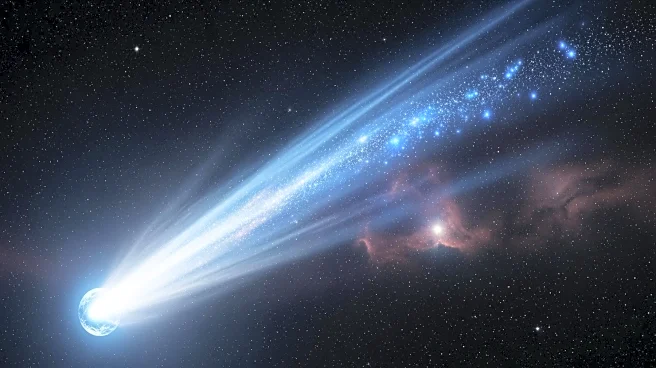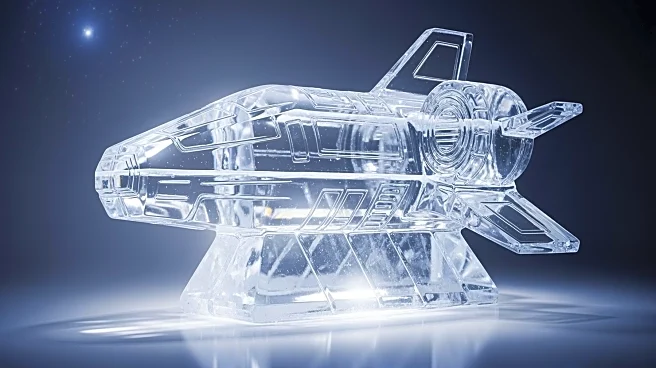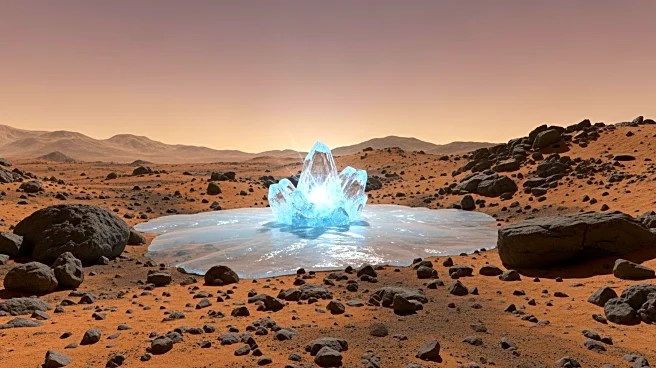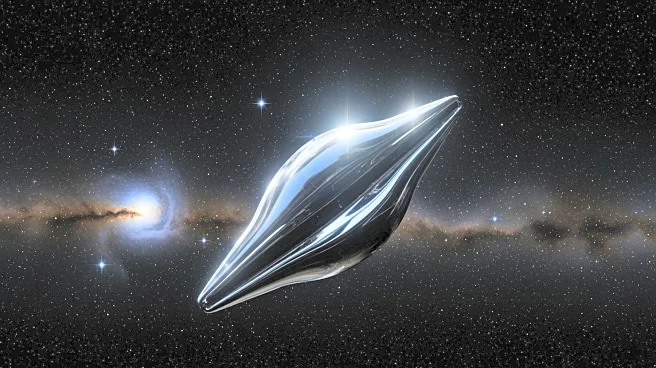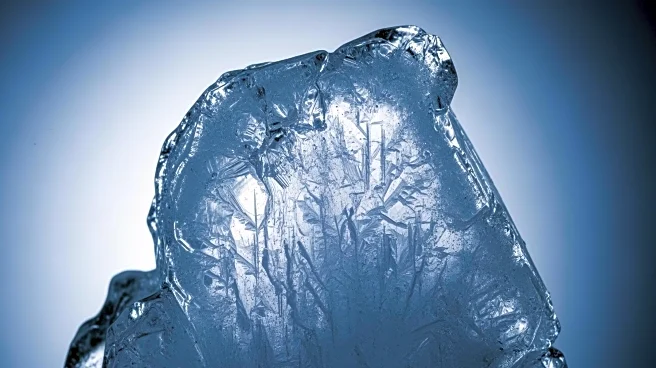What's Happening?
Scientists from the Korea Research Institute of Standards and Science (KRISS) have discovered a new phase of ice, named Ice XXI, through a study published in Nature Materials. Using diamond anvil cells, the researchers subjected water to extreme pressure,
2 gigapascals, to create this new form of ice. The experiment involved rapid compression and high-tech X-ray facilities to capture the molecular structure of Ice XXI. This discovery adds to the existing 20 known phases of ice, each with unique molecular arrangements. The research aims to provide insights into the interiors of icy moons in the Solar System, as the high-temperature, metastable ice phases could help understand their composition.
Why It's Important?
The discovery of Ice XXI is significant as it could enhance our understanding of planetary science, particularly the composition and behavior of icy moons. These moons, such as those orbiting Jupiter and Saturn, are believed to have subsurface oceans and complex geological processes. Understanding the properties of Ice XXI could lead to breakthroughs in space exploration and the study of extraterrestrial environments. Additionally, the research highlights the potential for new high-temperature metastable ice phases, which could offer insights into the formation of unusual magnetic fields on planets like Neptune and Uranus.
What's Next?
Future research may focus on exploring other high-temperature metastable ice phases and their transition pathways. Scientists could use these findings to develop models that simulate the conditions on icy moons, potentially leading to new discoveries about their geology and potential habitability. The study also opens avenues for further investigation into the role of supercompressed water in planetary science, which could have implications for understanding Earth's own geological processes.
Beyond the Headlines
The discovery of Ice XXI underscores the importance of interdisciplinary research, combining materials science, planetary science, and advanced imaging techniques. It also highlights the role of international collaboration, as facilities like the European X-Ray Free-Electron Laser Facility were crucial in visualizing the ice structure. This research could inspire new technological advancements in high-pressure experiments, benefiting various scientific fields.




